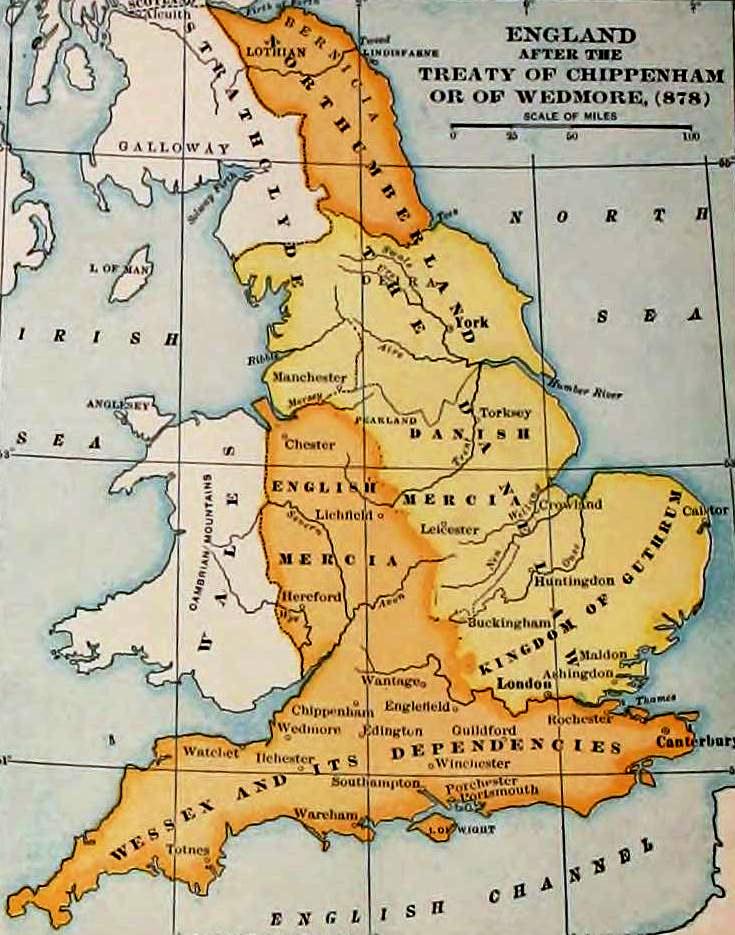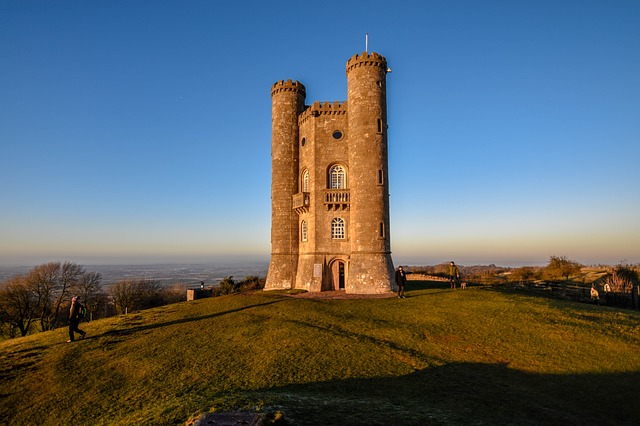Originating in eighth century Wessex, the Anglo-Saxon shire system would replace the Roman Provinces as the British standard of local government. Throughout the eighth and ninth centuries the system gradually expanded to cover the whole of England.

A Shire which usually took its name from its principle city was governed by an Eldorman, a noble of the highest social rank, who was appointed by the King to represent his interests within the region. The Eldormen were responsible for the Shire militia (the fyrd), secular law in the shire moot, and presided over the shire court. From the tenth and eleventh centuries many of these Eldormen became powerful local magnates, often controlling more than one shire, and the title became shortened to Earls.
A common subdivision of the shire, in Saxon regions south of the River Tees, was the Hundred. These varied in size from area to area and emerged as local administrative units during the tenth century. The name may have originated from the grouping of a hundred Hides, a unit of land considered sufficient to support a peasant and his household. Again the Hide could be of various sizes ranging from as little as 40 acres in Wessex to about 120 acres in the eastern shires. Hides were the basic unit for the assessment of taxation and military service, and were subject to the Hundred courts, which met every four weeks, having jurisdiction in cases relating to local issues and apportioning taxes.

The Anglo-Saxon system of Shire, Hundred and Hide was not so dissimilar to that within the Danish controlled regions in the North, Central, and Eastern England in which Danish rather than Saxon laws and customs prevailed. King Edgar (reigned 959-75) granted autonomy to the Danish settlers in these regions (this being known as the Danelaw).
Between the rivers Tees and Thames in eastern England this would still prevail as the common customary law even as late as the eleventh and twelfth centuries. In these regions the organization of local government was known as the Wapenstakes, which probably originates out of the Norse words for “weapon” and “take”; taking or grasping a weapon was probably a Viking way of signifying assent at meetings. Like the Saxon Hundreds, the Wapenstake was the basic unit of tax assessment, and each Wapenstake was responsible for maintaining law and order within its own jurisdiction.
The Danelaw equivalent of the Saxon Hide was, from the tenth century, known as the Ploughland. This was a unit of land of probably amounting to about approximately a hundred acres which could be plowed by one team of eight oxen .

Incidentally, the term Hundreds still exists today in one form. The Chiltern Hundreds are three Hundreds (Stoke, Desborough and Burnham ) in south central England. By tradition, a member of Parliament cannot resign his seat, but if he wishes to retire he may apply for one of two stewardships, the holder of which, since he becomes a paid member of the crown, may not (since 1707) sit in Parliament. Formerly there were several such stewardships, but since 1957, there have been only two – the Chiltern Hundreds and the Manor of Northstead in Yorkshire.
With the Norman conquest the Shires would be replaced by the Counties, although the word Shire would continue often as a part of the county name (e.g. Yorkshire, Nottinghamshire, Hampshire etc.). Under Norman control the Eldormen would likewise be replaced by Sheriffs, although the manner of their appointment and duties would largely remain unchanged from that of their earlier counterparts.


